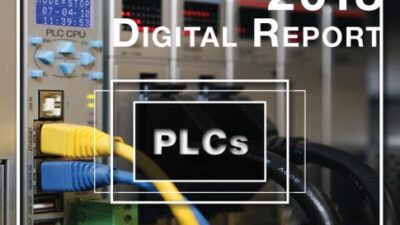Stepping motor-based systems offer an economical method of motion control. Different types of drives (or controls) expand step-motor performance for added versatility. Relative performance of a typical standard hybrid step motor under various drive conditions is shown in the diagram. (Popular in industry, hybrid step motors combine characteristics of permanent magnet and variable-reluctance s...
Type of control can dramatically change the performance of a step motor.
Approximate torque and speed values are shown to indicate relative changes only.
Stepping motor-based systems offer an economical method of motion control. Different types of drives (or controls) expand step-motor performance for added versatility.
Relative performance of a typical standard hybrid step motor under various drive conditions is shown in the diagram. (Popular in industry, hybrid step motors combine characteristics of permanent magnet and variable-reluctance step-motor types.)
For the greatest wiring flexibility, the motor’s eight leads are connected to the ends of the four coils that make up the phase windings. The coils can be connected in series or in parallel to operate with a bipolar drive, or in series with a center tap to run from a unipolar drive . Relationships between motor parameters when using these connections are summarized in the Online Extra item.
Use half or all the copper
Unipolar drives (diagram curves 3, 4, 5) supply current to a given motor phase in only one direction. These simpler drives use only half the copper available in any phase at a given time. The result is less torque at low speeds than with the same motor operated from a bipolar drive of the same input power.
Bipolar drives (curves 1, 2, 6) supply either positive or negative current to a given motor phase. Drive electronics are more complex here, but using all the copper in the phase windings results in about 40% more torque at low speeds than from a unipolar drive with the same motor.
Unipolar or bipolar drives can be further divided into voltage (L/R) type and constant current type (which includes a chopper or PWM).
Voltage (L/R) drives (curves 4, 5, 6) apply rated voltage to the motor phases and rely on winding resistance to limit current. The least costly drives in this class have the poorest speed performance (curves 5 and 6). Adding a power resistor in series with each winding, and using a higher supply voltage to maintain rated voltage at the motor, can enhance high-speed performance somewhat (curve 4). This effectively lowers the motor’s L/R time constant, allowing more rapid current build up. Due to large power losses in the resistors, this approach is practical only for resistor values up to a few times the motor resistance.
Performance of a bipolar voltage drive is the same whether the windings are connected in series or parallel, because the L/R time constant is the same. But the unipolar connection has higher speed capability than either bipolar connection because the unipolar L/R time constant has half the value.
Constant current drives (curves 1, 2, 3) use a much higher supply voltage than the rated voltage of the motor (typically 10 times higher or more). They also use current-sensing circuitry and apply pulse-width modulation (PWM) to the supply voltage to maintain the motor’s rated current and keep it from overheating. As noted earlier, a higher supply voltage allows the motor to run at higher speeds. Advances in integrated circuits and power-switching transistors have made this a very popular type of drive, even though it is relatively complex.
The bipolar constant current drive is the most popular drive type today for high-performance applications. When the same supply voltage is used a bipolar parallel connection (curve 1) will result in about twice the speed of a bipolar series connection (curve 2). However, the parallel connection requires twice the current of the series connection. Unipolar constant current drives are less common and their low-speed torque performance is lower compared to bipolar drives (curve 3).
Understanding the relative performance of a step motor with various drive types will aid users in selecting the most suitable control for a given application, or provide insight on how to increase performance of a stepping-motor system.


